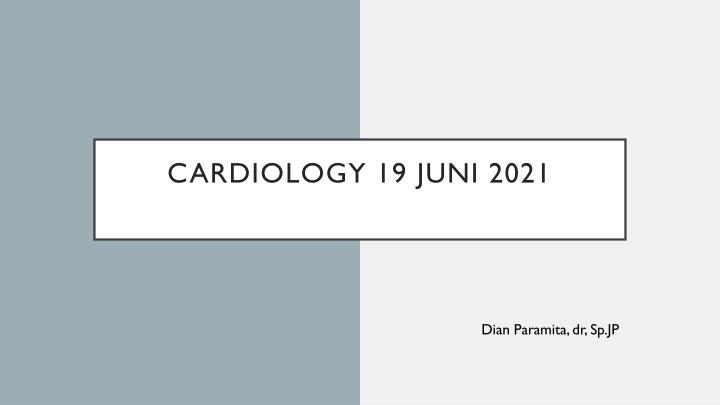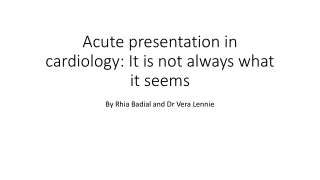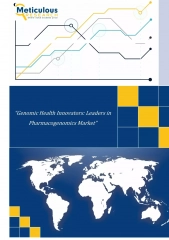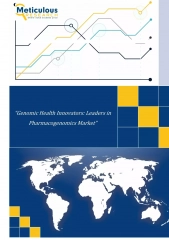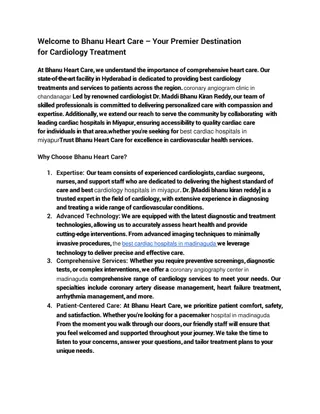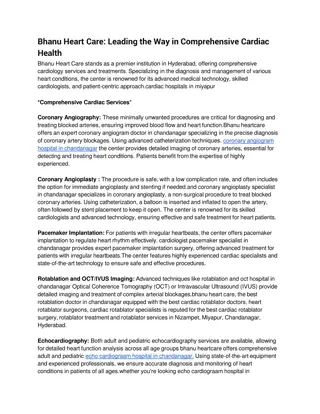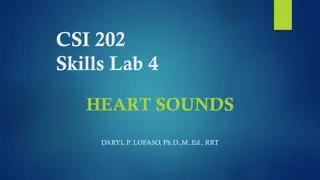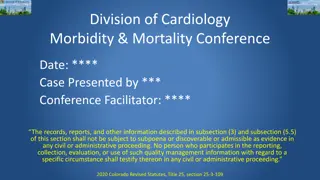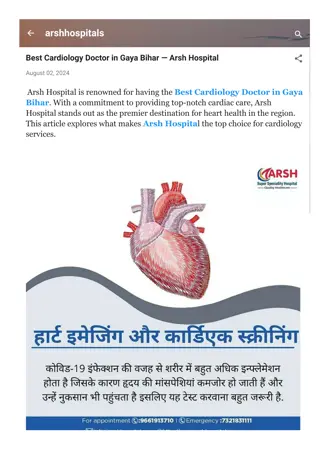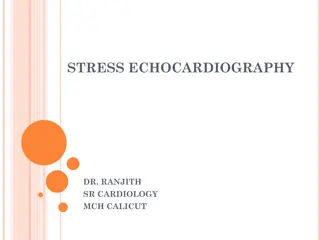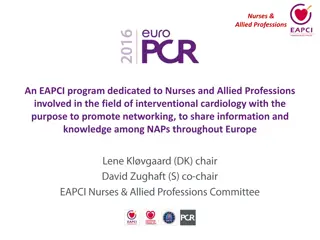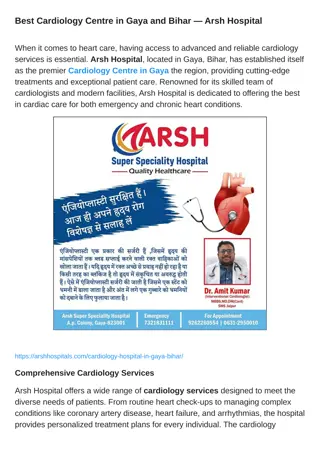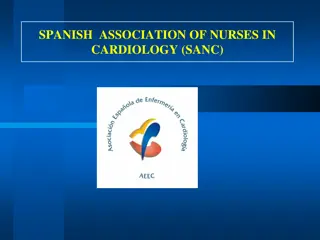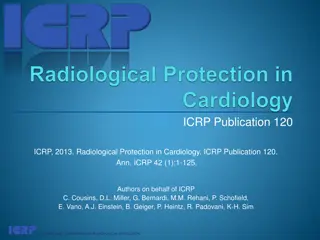CARDIOLOGY 19 JUNI 2021
Cardiac rehabilitation (CR) offers numerous benefits, including improved heart rate recovery, reduced mortality, enhanced left ventricular function, and decreased depression symptoms. Learn about the importance of CR in cardiovascular health and its impact on patients recovering from cardiac events.
Download Presentation

Please find below an Image/Link to download the presentation.
The content on the website is provided AS IS for your information and personal use only. It may not be sold, licensed, or shared on other websites without obtaining consent from the author.If you encounter any issues during the download, it is possible that the publisher has removed the file from their server.
You are allowed to download the files provided on this website for personal or commercial use, subject to the condition that they are used lawfully. All files are the property of their respective owners.
The content on the website is provided AS IS for your information and personal use only. It may not be sold, licensed, or shared on other websites without obtaining consent from the author.
E N D
Presentation Transcript
CARDIOLOGY 19 JUNI 2021 Dian Paramita, dr, Sp.JP
1 Which of the following is not a benefit of cardiac rehabilitation (CR)? A. Improved heart rate recovery B. Decreased levels of high-density lipoprotein (HDL) cholesterol C. Dose-dependent reduction in mortality D. Improved left ventricular (LV) function E. Decreased depression symptoms
Clinical trials have demonstrated many clinical benefits of exercise-based CR. A number of mechanistic effects seem to contribute to this clinical benefit. For example: exercise has anti-inflammatory effects by increasing HDL cholesterol levels (option B). Heart rate recovery is an indicator of cardiovascular (CV) health, and impaired heart rate recovery predicts mortality. In a study of patients with abnormal heart rate recovery prior to starting CR, the exercise program resulted in a 41% improvement in heart rate recovery (A) Following MI, exercise training has proven benefits on LV function and remodelling (optionD),andth
And the effects were greatest when the exercise training was started 1 week after MI and lasted longer than 12 weeks. It has been estimated that 20% to 45% of patients demonstrate depression following gMI. Improved fitness were associated with decreased depressive symptoms and decreased mortality (optionE) Furthermore,the relationship between the number of CR sessions completed in older patients and improved outcomes found a dose-dependent reduction in mortality and recurrent MI (option C).
2 A 54-year-old man recovering from a cardiovascular event is referred to you for medical evaluation prior to initiating CR. Which of the following is a contraindication to enrollment in a CR program? A. Hypertension B. Coronary artery bypass graft (CABG) surgery C. Myocardial infarction (MI) D. Unstable angina E. All of the above
To establish a safe and effective program of comprehensive CV disease risk reduction and rehabilitation, each patient should undergo a careful medical evaluation and exercise test before participating in an outpatient CR/SP program. CR was initially implemented to reduce hospitalizations after MI (option C), but given the benefits for CV health, the concept was expanded to include patients with several conditions. This includes patients undergoing cardiac surgery and coronary interventions (option B), and those with a high cardiovascular risk, namely hypertensives (option A). Nevertheless, there are absolute contraindications to CR, including all conditions where physical exercise carries a significant risk of adverse effect, such as unstable angina (option D). The indications and contraindications for CR are summarized in
3 A 59-year-old man with long-standing hypertension is admitted to the ER with a myocardial infarction (MI). Following revascularization with coronary stenting, he improves clinically. Which of the following signs suggests that the patient is ready for a gradual mobilization program and CR? A. No signs of decompensated heart failure B. New or recurrent chest pain in the past hour C. Steadily increasing troponin levels D. A recent change in cardiac rhythm E. None of the above
Phase I of CR traditionally begins in the hospital and lasts for the duration of hospitalization. This phase emphasizes a gradual, progressive approach to exercise and an education program that helps the patient understand the disease process, the rehabilitation process, and initial preventive efforts to slow the progression of disease. Simple breathing and leg exercises are commenced with a program of gradual mobilization. The emphasis at this stage is to counteract the negative effects of deconditioning after a cardiac event. A patient is considered appropriate for daily ambulation/mobilization if he or she meets four criteria: there is no new or recurrent chest pain during the previous 8 hours (option B), neither troponin nor creatine phosphokinase (CPK) is increasing (option C), there are no signs of decompensated heart failure (option A), and there is no significant change in ECG or rhythm in the previous 8 hours (option D).
4 During a treadmill exercise stress test, a 60-year-old male patient becomes tired and asks to stop the test. Which of the following signs and symptoms is not considered an absolute test termination criterion? A. Cyanosis B. Dyspnea C. Ataxia D. Severe chest pain E. Dizziness
Exercise stress testing in CR is performed to measure the ischemic threshold, assess for arrhythmias, assess exercise tolerance, evaluate hemodynamic response (blood pressure, heart rate), and observe for signs and symptoms of ischemia. The test is traditionally carried out using a treadmill or a cycle ergometer with monitoring of ECG, heart rate, and blood pressure. The RPE Scale and the individual s description of his or her levels of angina and dyspnea (option B) are also assessed. The exercise test usually lasts for 8 to 12 minutes and is terminated when the patient develops symptoms, such as chest pain (option D), or when he or she achieves a physiologic end point, such as 85% of maximal predicted heart rate. The subject s general appearance during the exercise test is also of value and should be carefully observed during the exercise test. Signs of poor perfusion, such as cyanosis (option A) or pallor, and increasing nervous system symptoms, such as ataxia (option C), dizziness (option E), and vertigo, serve as absolute test termination criteria.
5 Following medical evaluation, a 60-year-old male patient is determined to be in the class C risk category for exercise training. Which of the following statements about his exercise capacity is true? A. His exercise capacity is approximately 10 METs B. His oxygen uptake during exercise is < 21 mL O2 uptake/kg/min C. His maximum HR during exercise (HRmax) is 140 beats per minute D. He is unlikely to develop angina at a workload < 6 METs E. None of the above
The exercise goals of a CR program are developed based on an individuals baseline ability and limitations. Risk stratification is performed with each patient before the initiation of an exercise program. The guidelines published by the AHA use four categories (A, B, C, and D) according to clinical characteristics. Class C individuals are at moderate or high risk of cardiac complications during exercise due to one of the following: - a history of multiple MIs or cardiac arrest, - New York Heart Association class III or IV angina - exercise capacity of less than 6 METs (option A), and - significant angina or ischemia at a workload < 6 METs (option D). 1 MET is defined as 3.5 mL O2 uptake/kg/min, therefore this patient has an oxygen uptake capacity of < 21 mL O2 uptake/kg/min during exercise (option B). His maximum HR can be estimated as 220 minus his age in years, therefore his HRmax is equal to 160 beats per minute (option C).
6 A 65-year-old woman with stable angina is evaluated for an exercise training program. Which of the following is a correct method for determining appropriate exercise intensity? A. Exercise intensity is determined by the patient s oxygen consumption at rest B. Exercise intensity is equal to the maximum heart rate achieved during the exercise test C. Exercise intensity is estimated as the heart rate equal to 220 minus the age in years D. Exercise intensity is extrapolated from a plot of the heart rate versus oxygen consumption E. All of the above
The intensity for exercise training can be calculated from the exercise test (option A), and for cardiac patients, the heart rate is the most common method used. There are three methods of using the heart rate, and these include the direct method, the percentage of HRmax, and the heart rate reserve In the direct method, the heart rate is plotted against oxygen consumption, and the appropriate exercise intensity is extrapolated (option D). The percentage of HRmax method uses 65% to 75% of the heart rate achieved during the exercise test, which approximates from 40% to 60% of an individual s maximal oxygen consumption (VO2 max) (option B). In the heart rate reserve method, the resting heart rate is subtracted from the maximal heart rate (estimated as 220 minus the age in years) to give the heart rate reserve. If an exercise prescription of 60% to 80% of maximal oxygen consumption is required, then 60% and 80% values of the heart rate reserve are calculated, and the resting heart rate is added to each value to give the training heart rate values (option C).
7 Which of the following is not a physiologic effect of smoking on the cardiovascular system? A. Cell migration to the intima B. Increased fibrinogen levels C. Decreased platelet adhesion to the endothelium D. Smooth muscle proliferation E. None of the above
Cigarette smoking, a major risk factor for the development of CHD, remains a leading cause of preventable death worldwide. The causal relationship between smoking and CV disease is well established. The effects of smoking on the CV system include stimulation of smooth muscle proliferation (option D) and cell migration to intima (option A), increase in platelet adhesion to the endothelium (option C), and an increase in fibrinogen levels (increased clotting) (option B). Smoking cessation will reduce the subsequentriskofmortalitybyupto9%. Observational studies in post-MI patients suggest that this may be reflected as halving of long-term mortality.
8 A 57-year-old hypertensive male patient is evaluated following myocardial infarction. Which of the following findings would suggest that this patient has secondary hypertension? A. Uncontrolled hypertension despite three medications B. Nocturnal dipping of blood pressure on 24-hour ambulatory monitoring C. Minimal alcohol consumption D. Low salt sensitivity E. All of the above
Evidence exists regarding the importance of hypertension as a risk factor for CV disease and the importance of lifestyle measures and appropriate medication to treat and control hypertension. Ambulatory blood pressure monitoring can confirm the diagnosis of hypertension. A change in lifestyle behaviors may have important effects on BP control. Excessive alcohol consumption (option C) is associated with hypertension, and reduction or cessation of alcohol consumption has been shown to improve blood pressure and to reduce need for medication. Most people with hypertension are salt-sensitive (option D), and reductions in dietary salt are effective. There is a direct link between increasing body weight and blood pressure levels, particularly if fat distribution is central.Stress has a major effect on blood pressure, and recognizing and eliminating this factor may have important effects. Secondary causes of hypertension may be diagnosed if one of the following is noted: blood pressure of 180/110 mm Hg, uncontrolled hypertension despite three medications (option A), or nondipping of blood pressure during 24-hour ambulatory blood pressure monitoring (option B).
9 Following a psychological evaluation of a 48-year-old woman recovering from a myocardial infarction, you observe that she feels anxious about her cardiovascular health and upcoming CR. Which of the following is not a physiologic response to anxiety? A. Platelet and macrophage cell activation B. Increased levels of blood lipids C. Increased heart rate D. Decreased myocardial oxygen demand E. Increased blood pressure
Psychosocial factors may affect the occurrence and recurrence of CHD and may affect rehabilitation. Anxiety and depression are prevalent in both cardiac patients and their families and are associated with increased morbidity and mortality. Although they may be normal responses after a cardiac event and a natural part of recovery after any life-threatening or stressful event, in excess, they may seriously impede rehabilitation. Anxiety can affect both short- and long-term recovery after a cardiac event. It may relate more to how an individual responds to his or her condition than to its severity. Anxiety may trigger a variety of physiologic responses such as - increased levels of circulating lipids (option B), platelet and macrophage cell activation (option A), and - increased heart rate (option C), blood pressure (option E), and myocardial oxygen demand (option D), all of which have have implications for the development of atherosclerosis, ischemia, MI, and sudden death.
10 Which of the following is the most common reason for the underutilization of CR programs? A. Lack of physician referral B. Higher socioeconomic status C. Patient age < 65 years old D. Male gender E. None of the above
The most common barrier to CR is a lack of physician referral (option A). Despite national guidelines in the United States designating CR as a Class IA recommendation, Menezesetal report that up to 80% are not referred. In particular, women(optionD), those of lower socioeconomic status (option B), and patients over age 65 (option C) have lower rates of referral The EuroAspire survey analysed records and interviews of 9000 patients and reported that only one-third of patients with CHD received any form of CR. Even among those reffered to CR, the dropout rate is high among post MI px. Importantly, once reffered to CR the reasons for nonattendance were more likely due to personal factors, such as perceptions of heart disease and family influence, versus physical issues.
11 Acute rheumatic fever (ARF) is a multisystem autoimmune response to untreated or partially treated group A Streptococcus (GAS) pharyngitis. Which of the following statements about ARF is false? A. First attacks are rare in the very young B. The peak incidence of ARF occurs in those age 5 to 15 years C. ARF is rare in adults older than age 35 D. ARF is equally common in males and females E. No association with ethnic origin has been found
Acute rheumatic fever is equally common in males and females, but RHD is more common in females in almost all populations First attacks are rare in the very young (opt. A); only 5% of first episodes arise in children younger than age 5, and the disease is almost unheard of in those younger than age 2 (option A). The peak incidence of ARF occurs in those age 5 to 15 (option B), with a decline thereafter such that cases are rare in adults older than age 35 (optionC). No association with sex or ethnic origin has been found (options D and E).
12 The incidence of ARF began to decline in developed countries toward the end of the 19th century, and by the second half of the 20th century, ARF had become rare in most affluent populations. Which of the following factors contributed least to this decline? A. More hygienic living conditions B. Less crowded living conditions C. Better nutrition D. Improved access to medical care E. The advent of antibiotics
This decline is attributed to more hygienic and less crowded living conditions, better nutrition, improved access to medical care, and, to a lesser extent, the advent of antibiotics in the 1950s. The decline in the prevalence of RHD in wealthy countries has followed a similar pattern, albeit with a delay compared to ARF incidence, which is explained by the chronic nature of RHD
13 A 31-year-old man with a prior history of rheumatism in every joint at the age of 15 presented to the emergency department complaining of pain in the left hip and right knee. His physical examination revealed a systolic murmur, loudest at the apex and radiating to the axilla. Which of the following statements about the antibodies that contribute to this rheumatic valvulitis is false? A. They target the N-acetyl- -D-glucosamine dominant epitope of the GAS carbohydrate B. They recognize sequences in -helical proteins (eg, myosin and tropomyosin) C. They are neutralized by appropriate antibiotic therapy D. Their serum levels fall significantly after surgical removal of inflamed valves E. None of the above
The antibodies that contribute to rheumatic valvulitis target the N-acetyl--D- glucosamine dominant epitope of the GAS carbohydrate, but they also recognize sequences in -helicalproteins (eg,myosin and tropomyosin). These antibodies are elevated in patients with valvular involvement in ARF, significantly reduce after the surgical removal of inflamed valves, and correlate with poor prognosis. At this stage, antibiotics are ineffective and do not reduce the level of circulating antibodies.
14 A 29-year-old healthy woman with a past medical history of ARF as a child is seen in the clinic because her 12-year-old daughter has recently been diagnosed with ARF. She is concerned that ARF may be running in her family and that her 2- year-old son may thus be at increased risk of having ARF. Which of the following genetic factors has been associated with the development of ARF? A. Human leukocyte antigen (HLA) Class II alleles B. Polymorphisms of transforming growth factor- 1 C. Immunoglobulin genes D. Certain B-cell alloantigens E. All of the above
Host factors have been considered to be important ever since familial clustering was reported last century. Associations between disease and HLA Cass II alleles have been identified, but the alleles associated with susceptibility or protection differ depending on the population investigated High concentrations of circulating mannose-binding lectin and polymorphisms of transforming growth factor- 1 and immunoglobulin genes also are associated with ARF. Certain B-cell alloantigens are expressed to a greater level in patients with ARF or RHD than controls, with family members having intermediate expression, suggesting that these antigens are markers of inherited susceptibility.
15 The long-term clinical consequence of ARF is related to permanent cardiac damage. Which of the following patients is most likely to have permanent cardiac damage from ARF? A. 15-year-old boy with pleuritic chest pain and diffuse concave-shaped ST-elevation on ECG B. 25-year-old man with acute heart failure with an EF of 25% and recurrent tachyarrhythmias C. 27-year-old man with joint pain and a pansystolic murmur loudest at the apex and radiating to the axilla D. 19-year-old woman with central pleuritic chest pain, positive troponins, and raised inflammatory markers E. All of the above
Although rheumatic carditis involves the pericardium, myocardium, and endocardium, fibrinous pericarditis (options A and D) and interstitial myocardial involvement (options B and D) typically resolve without residual damage, whereas verrucous valvulitis (option C) is usually associated with asting damage. Notably, the pathologic changes also indicate that, unlike in the more common lymphocytic form of myocarditis, heart muscle cells are spared in rheumatic carditis
16 ARF usually has an acute febrile onset and presents with variable combinations of major and minor manifestations. In which of the following presentations is the evidence of a preceding GAS infection not needed to diagnose ARF? A. 12-year-old girl with involuntary, purposeless, rapid, and abrupt movements associated with muscular weakness and emotional lability B. 13-year-old boy with polyarthritis, temperature of 38.5 C, and ESR of 60 mm in the first hour C. 9-year-old girl with polyarthritis, temperature of 39.5 C, and ESR of 120 mm in the first hour D. 12-year-old boy with pleuritic chest pain, arthralgia, fever, and ESR of 72 mm in the first hour E. None of the above
The diagnosis of ARF is made when the patient develops two major manifestations, or one major manifestation and at least two minor manifestations; in addition, evidence of a preceding infection with GAS must be demonstrated using streptococcal serology. The exceptions are patients who present with chorea (option A) or indolent carditis because these manifestations may only become apparent months after the inciting streptococcal infection, so additional manifestations may not be present and streptococcal serology testing may be normal
17 A 10-year-old girl was brought by her mother to the emergency department complaining of personality changes, with inappropriate behavior, restlessness, and outbursts of anger or crying. During the physical examination, the patient was asked to squeeze the examiner s hand. This resulted in repetitive irregular squeezes. Which of the following statements about the patient s condition is false? A. It must be associated with other manifestations of ARF in order to confirm the diagnosis B. It may be the sole expression of the ARF C. It is a neurologic disorder D. It occurs in up to 30% of cases of ARF E. The abnormal movements disappear during sleep
Mild chorea may best be demonstrated by asking the patient to squeeze the examiner s hand. This results in repetitive irregular squeezes labeled as the milking sign. Emotional lability manifests in personality changes, with inappropriate behavior, restlessness, and outbursts of anger or crying Sydhenham s chorea may be associated with other manifestation of ARF but may also be the sole expression the disease (options A and B). It is a neurologic disorder characterized by involuntary, purposeless, rapid, and abrupt movements associated with muscular weakness and emotional lability (option C). Chorea occurs in up to 30% of cases of ARF (option D). The abnormal movements disappear during sleep (option E).
18 An 11-year-old girl was brought to the emergency department by her parents complaining of pains in the right hip and left knee. On physical examination, there was a pink rash on the patient s trunk. She had a temperature of 39.5 C, and the ESR was 120 mm in the first hour. Which of the following statements about this rash is false? A. It is itchy and evanescent in nature B. It affects the trunk predominantly C. It may be fleeting and disappear within hours D. It may be brought out by a warm bath or shower E. It is found in only 4% to 15% of cases
Erythema marginatum is a non itchy (option A), evanescent rash that is pink or slightly red and that affects the trunk predominantly (option B). The rash extends centrifugally, and the skin in the center returns toward normal. The rash may be fleeting and may disappear within hours (option C). It may be brought out by a warm bath or shower (option D). It is reported to be found in only 4% to 15% of cases and may be difficult to detect in dark-skinned patients (option E).
19 A 12-year-old boy was brought by his parents to the emergency department complaining of a rash over the bony surfaces of his elbows, wrists, and knees. Three to 4 weeks ago, the patient presented to the same hospital with pleuritic chest pain, arthralgia, fever, and ESR of 72 mm in the first hour. The physical examination revealed some nodules over the bony surfaces of his elbows, wrists, and knees. Which of the following statements about these nodules is false? A. They generally appear later in the course of the disease after several weeks of illness B. They are seen most commonly in patients with carditis C. They are firm and painful D. The overlying skin is not usually inflamed E. They occur in less than 10% of cases of ARF
These nodules generally appear later in the course of the disease after several weeks of illness and are seen most commonly in patients with carditis. They are firm and painless; the overlying skin is not inflamed and may vary in size from a few millimeters to several centimeters. They are most commonly located over bony surfaces or tendons such as elbows, wrists, knees, occiput, and spinous processes of the vertebrae. These occur in less than 10% of cases of ARF.
20 There is no definitive laboratory test for ARF, with the diagnosis based on a combination of clinical manifestations and laboratory evidence of previous streptococcal infection. Which of the following laboratory findings cannot be used as evidence of a preceding strep infection? A. Increased or rising antistreptolysin O titer B. Increased or rising of other streptococcal antibodies C. A positive throat swab culture D. Rapid antigen test for group A -hemolytic streptococci E. None of the above
Evidence of preceding streptococcal infection may be demonstrated by increased or rising antistreptolysin O titer, other streptococcal antibodies, a positive throat swab culture, or a rapid antigen test for group A -hemolytic streptococci.
21 A 65-year-old man was referred for cardiac consultation following a 2-year history of dyspnea on minimal exertion. He had a coronary angiography in the past that revealed normal coronaries. His physical examination revealed a 3/6 systolic ejection systolic murmur across the precordium. An echo was obtained showing left ventricular dysfunction with an EF of 38%, a calcified aortic valve with a mean gradient of 29 mm Hg, and AVA (aortic valve area) of 0.9 cm2. Which of the following is the best next step in the management of this patient? A. SAVR after coronary angiography B. Left and right cardiac catheterization C. Exercise treadmill testing D. TAVR E. Dobutamine stress echocardiography (DSE)
There is a discrepancy between gradient and valve area calculation, and this needs to be sorted out before making any decision with regard to the interventions (options A and D are thus not correct). This patient may have low-flow/low- gradient severe AS with reduced EF. AS severity may be difficult to assess under resting conditions in low LVEF patients,1-5 and DSE (option E) can help clarify the issue by allowing reassessment of the AVA at a higher flow. With normalized flow, a patient with true severe AS increases the mean transaortic gradient in tandem with valve flow so that AVA remains nearly constant. A patient with pseudo-severe AS, a condition where low flow causes an overestimation of AS severity, increases valve flow with little increase in gradient, resulting in increased AVA. Options B and C would not be useful in resolving the discrepancy between gradient and valve area calculation in this case.
22 A 67-year-old man with a prior medical history of hypertension and atrial fibrillation was referred for cardiac consultation following a 2-year history of chest discomfort on minimal exertion. His physical examination revealed a late peaking 3/6 ejection systolic murmur with a soft and single S2. An echo was obtained showing left ventricular hypertrophy with an EF of 62%, moderate right ventricular dysfunction, moderate mitral regurgitation, a calcified aortic valve with a mean gradient of 29 mm Hg, and AVA of 0.7 cm2. Which of the following parameters may not be a contributor to paradoxical low-flow, lowgradient severe aortic stenosis? A. Hypertensive heart disease B. Atrial fibrillation C. Right ventricular dysfunction D. Occult aortic regurgitation E. Mitral regurgitation
23 A 52-year-old man with no prior medical history was referred for cardiac consultation following a 1-year history of chest pain and dyspnea on exertion. Palpation of the carotid arteries demonstrated a pulse low in volume and delayed in upstroke. His remaining physical examination revealed a late-peaking 3/6 systolic ejection murmur with a soft and single S2. An echo was obtained showing left ventricular hypertrophy with an EF of 62%, a calcified bicuspid aortic valve with a mean gradient of 44 mm Hg, and AVA of 0.7 cm2. Which of the following is the best next step in the management of this patient? A. SAVR after coronary angiography B. Stress cardiac magnetic resonance C. Exercise treadmill testing D. TAVR E. DSE
All evidence (clinical, physical exam findings, aortic gradient, and AVA) points to severe symptomatic AS in a patient with high-flow and normal EF, so SAVR is indicated (option A). No further tests are needed (options B, C, and E). SAVR remains the standard of care in low-risk patients, especially in individuals with a congenital bicuspid aortic valve. (Insufficient data are currently available for the routine use of TAVR (option D) in bicuspid aortic valve patients.)
